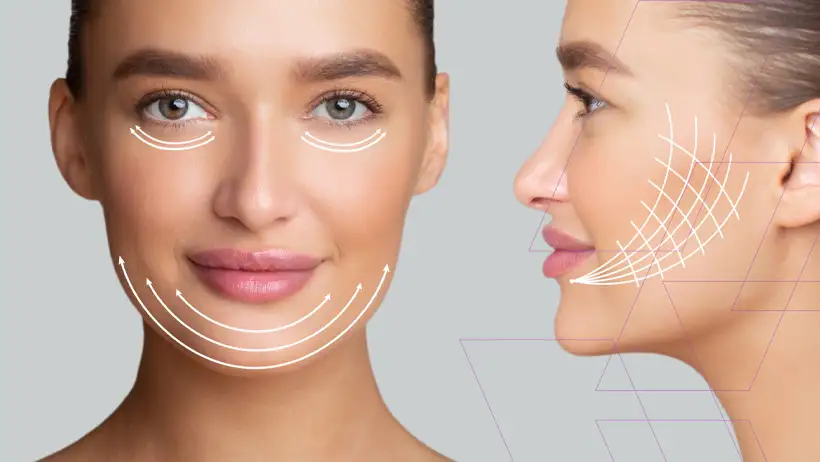Professionally administered in appropriate doses, the application prevents negative expressions such as fear or surprise on the face, providing the individual with a youthful and vibrant appearance.
What is a Botox?
Botox (Botulinum toxin) is a toxin derived from the bacterium Clostridium botulinum. It works by blocking the release of neurotransmitters at nerve endings, thereby interrupting the transmission between nerves and the organs they reach. The cessation of nerve transmission causes a decrease or complete loss of function in the organ reached by the nerve. For aesthetic and cosmetic purposes, Botox can be used to reduce or prevent wrinkles on the face caused by the movements of facial muscles, as well as to reduce sweating in excessively sweaty areas. It is also used in the treatment of chronic migraines.
Who Can Get Botox?
To undergo any aesthetic procedure, you must be at least 18 years old. Every adult individual, regardless of gender, has the freedom to decide on procedures they want to undergo for their own body. Anyone who is bothered by lines and wrinkles on the face, neck, and décolletage area can get Botox. Lines and wrinkles, especially those caused by frequent facial expressions, can appear between the eyebrows, around the eyes, and in the areas of the masseter and temporal muscles responsible for chewing, as well as around the lips. Anyone who wants to eliminate these lines and wrinkles can safely get Botox by consulting a medical aesthetic specialist.
Who Should Not Get Botox?
Although Botox is a simple and almost painless procedure, it may be risky for some individuals. Nursing and pregnant women are among those who should not undergo Botox, as well as those allergic to botulinum toxin or suffering from peripheral neuropathy (individuals experiencing numbness in some parts of their limbs). People with Myasthenia Gravis, a condition characterized by weakness in certain areas of skeletal muscles, should also avoid this aesthetic procedure. Similarly, individuals with Lambert-Eaton syndrome should refrain from getting Botox.
What to Pay Attention to After Getting Botox?
You undergo the Botox procedure to achieve smoother and younger-looking muscles and skin. Therefore, there are some points to consider after the procedure. For example, after getting Botox on your face, you should not sleep on your side for the first night. If you are accustomed to tossing and turning in your sleep, this may be a challenge for you. However, you can try sleeping on your back for one night. Avoid getting the treated area wet for the first 6 hours after the procedure, and afterward, avoid rubbing the area too vigorously during bathing or washing.
Plastic Surgeon
Plastic Surgeon
Plastic Surgeon
Plastic Surgeon
Plastic Surgeon
What is filler?
Filler can be used not only to address wrinkles in subcutaneous areas but also to achieve fuller breast or lip appearances.

How is filler done?
The filler procedure is not only much faster than serious aesthetic surgeries like facelifts but also provides a more economical way to achieve a youthful appearance. The filler procedure involves a simple injection under the skin. Before the procedure, local anesthesia is applied to the area. Depending on the area where the filler procedure is applied, it typically takes no more than half an hour. The effects of filler can last anywhere from 4 months to a year.
What is the difference between filler and botox?
Botox cannot completely eliminate deep lines that have settled on the face. Botox is a procedure aimed at addressing wrinkles caused by facial expressions and preventing them from becoming permanent. The toxin applied in Botox temporarily blocks the mimic muscles causing wrinkles, giving the area a smoother appearance. On the other hand, filler is injected directly under the wrinkles, filling the area and almost completely eliminating lines and wrinkles.





